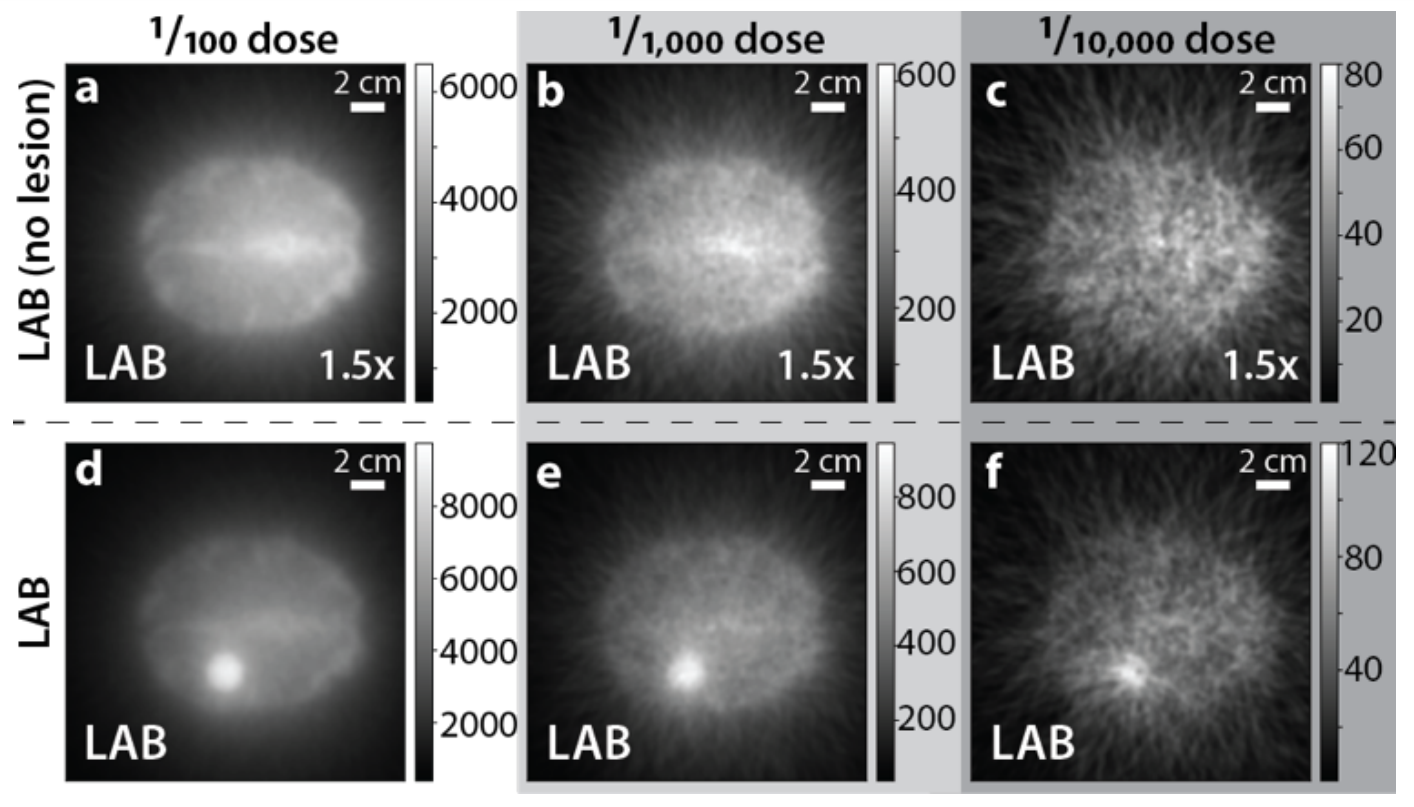University of Chicago Develops Lower Cost, Lower Radiation Dose PET Technology
Images

The University of Chicago has developed PET scanner technology that reduces the radiation levels and high costs associated with PET scans – enabling routine screening for the early detection of disease.
Currently, PET scanners cost approximately $2 million each. Half of this cost is due to rare-element scintillating crystals which are used to create light that is collected by an extensive system of photodetectors.
Eliminating the need for the entire system of crystals and photodetectors, the innovation is a direct evolution of the design for Large Area Picosecond Photodetectors (LAPPDTM), which were initially proposed in 2009 by Henry Frisch, a professor at the University of Chicago’s experimental High Energy Physics group.
Colloquially dubbed “the Frugal Tile,” the now commercially available detectors are capable of measuring the arrival of photons and charged particles with a time resolution measured in picoseconds (or a thousandth-billionth of a second).
The new design uses many of the lessons learned and many of the same principles as the LAPPD, explained Frisch, whose group of students has made significant progress in realizing the design. Their work has been published and presented at conferences, and the Polsky Center has filed provisional patent applications.
The invention is a new fundamental technique for detecting gamma rays and could change the paradigm of how PET scans are presently done, said Neal Sullivan, a pioneer in nanotechnology. Immediately impressed with the technology, Sullivan is among several collaborators advancing the research with Frisch, who has spent the past 15 years working on very precise time measurements. Also among the team is Camden Ertley, a gamma-ray astronomer and photodetector expert at Southwest Research Institutes (SWRI).
According to their research, the new technique could reduce radiation doses in PET scans by a factor of 1,000, which is the equivalent exposure to that of a trans-continental flight. As Frisch explained, lower radiation levels would enable patients to be screened for various diseases annually, including children, with whom there are greater concerns around radiation.
“The big gain here is much wider use, which is currently impossible,” Sullivan explained. This includes new geographic locations as well, such as rural areas and third-world countries, because the technique does not require that the machines have access to nearby sources of radioactive material.
Additionally, the actual scans take less time, which lets more patients be seen in a given day, further expanding its reach. The imaging is also up to five times more sensitive, producing higher-quality images for earlier and more accurate detection.
All these advantages could make PET scanners a cheap and robust commodity, instead of a luxury at large medical institutions. To explore the specifics around its commercial potential, the team has connected with a second-year student at the Chicago Booth School of Business, John Hruska, as part of the Polsky Center’s I-Corps program.
Hruska, who has a background in health care management consulting and is concentrating on corporate strategy and finance at Booth, has been conducting interviews with radiology professors, oncologists, and experts in manufacturing. And the interest is there, and significant.
Said Hruska, “Adding a precursor diagnostic that is safer, quicker, and higher resolution than current PET imaging will help more people get diagnosed and ultimately help them get treated.”
Currently, the group is working with multiple vendors to get first samples of the detector with support from the Polsky Center’s recently launched Proof-of-Concept Fund. The goal of the fund is to support prototype development, commercial feasibility tests, and other research activities necessary to de-risk the technologies under development.
In parallel, there is a substantial effort in collaboration with the Fermilab micro-electronics group to design a cutting-edge chip that would provide an inexpensive, highly capable readout of scan data. The effort is funded by the University of Chicago Joint Task Force Initiative – a cross-institutional collaboration launched in 2018 to provide support for Argonne and Fermilab.